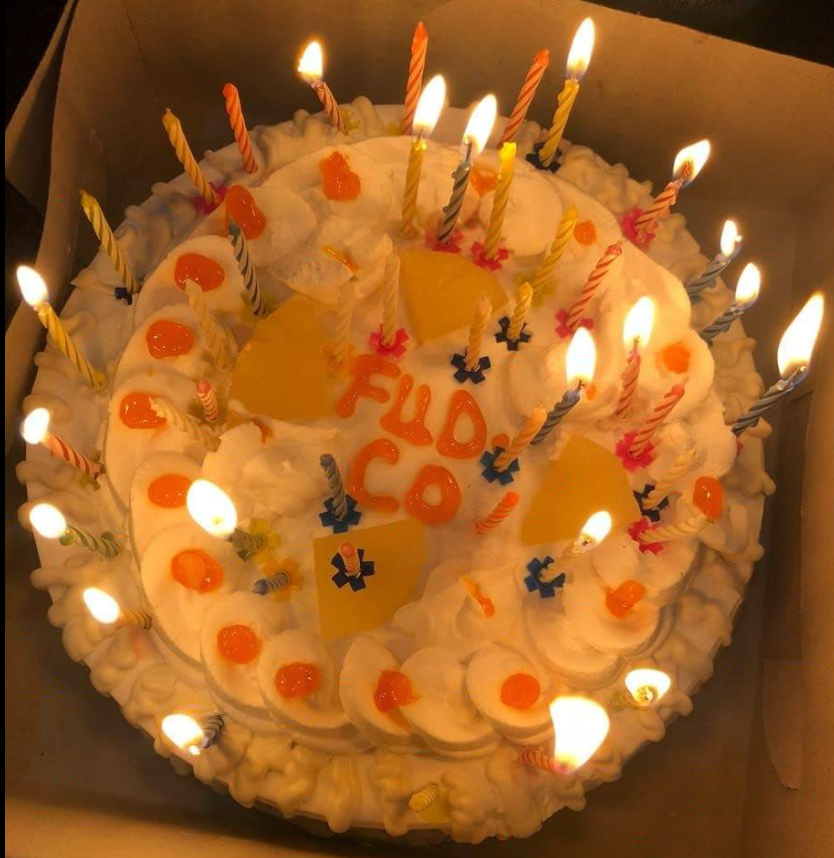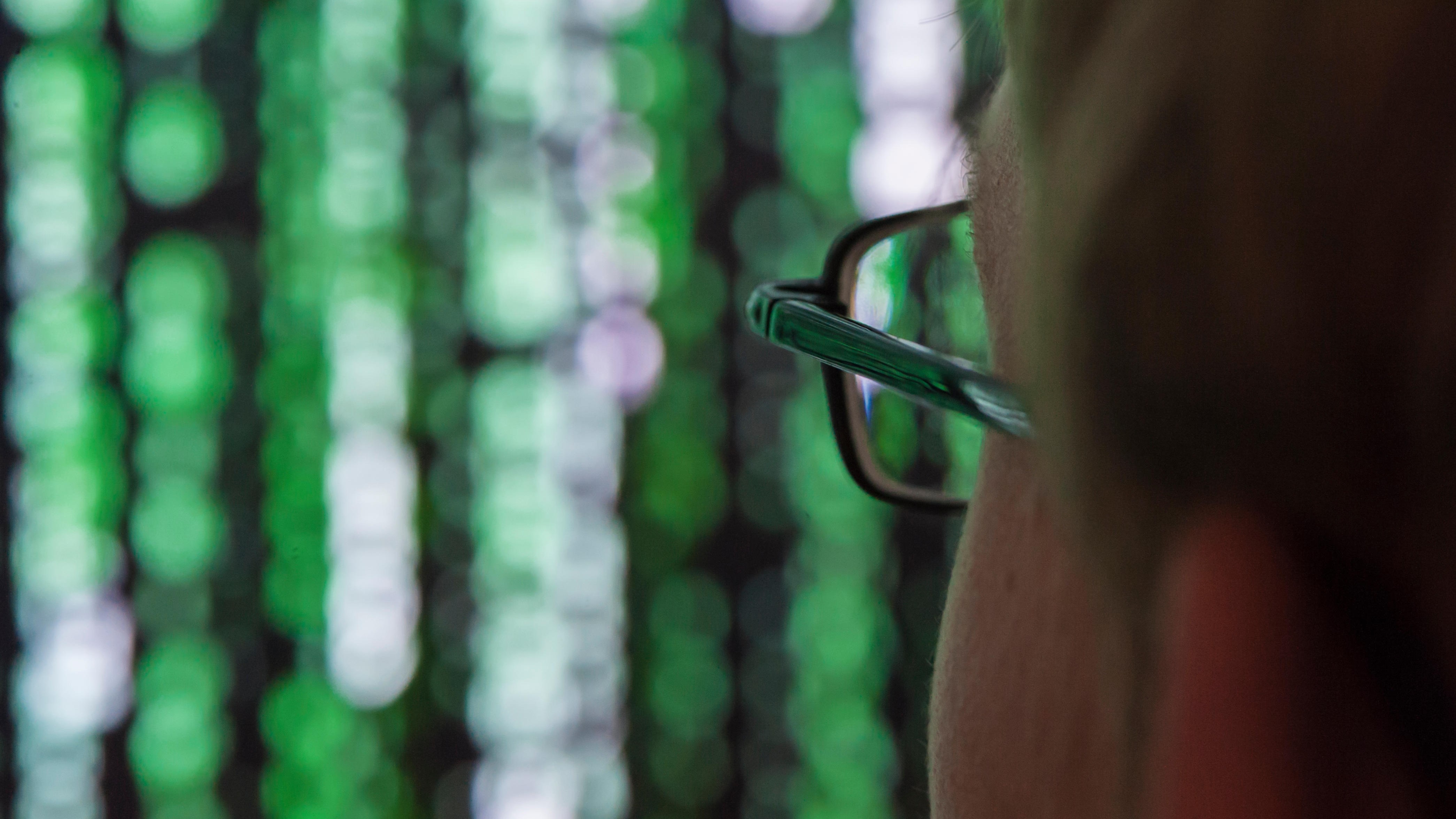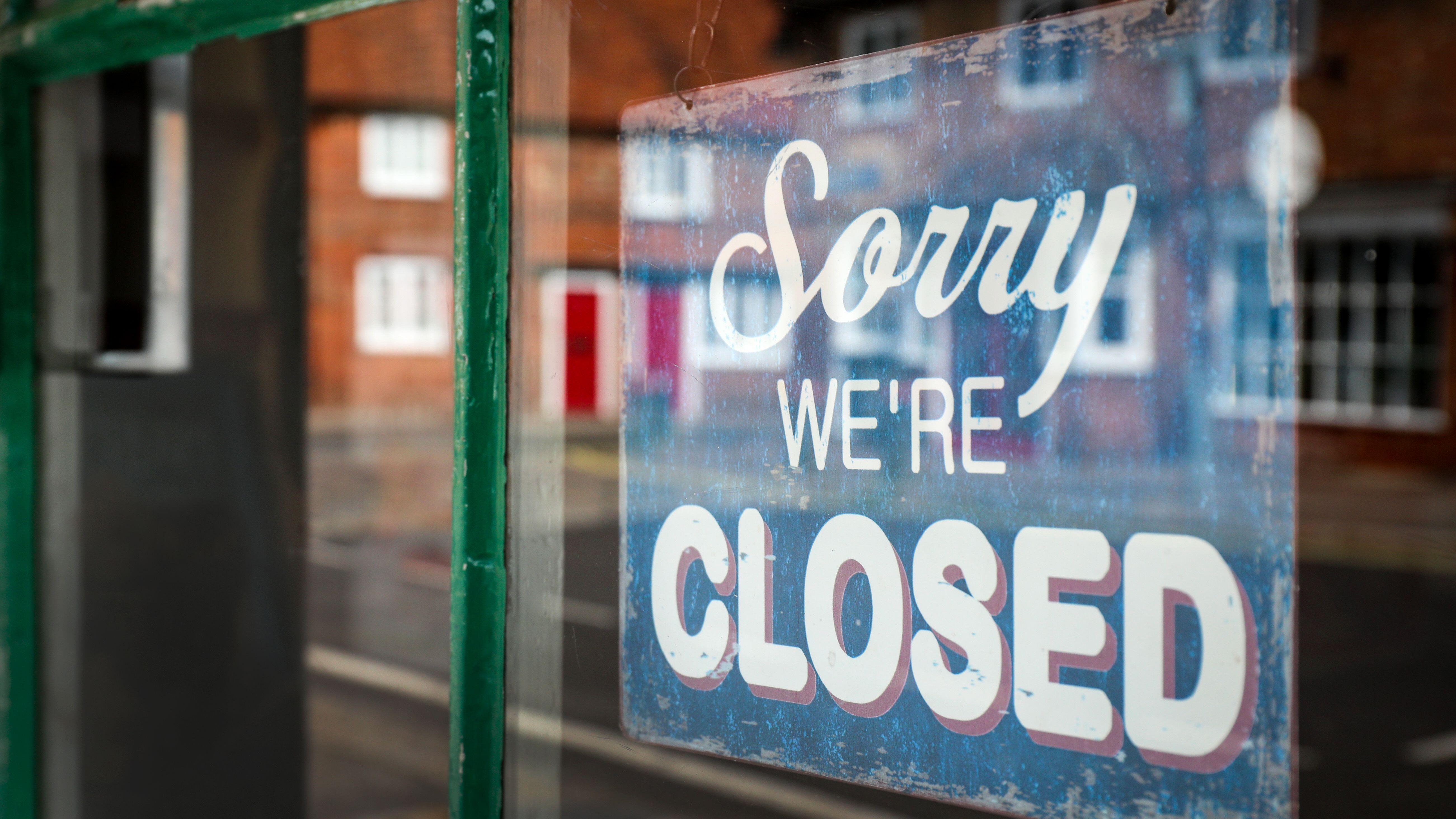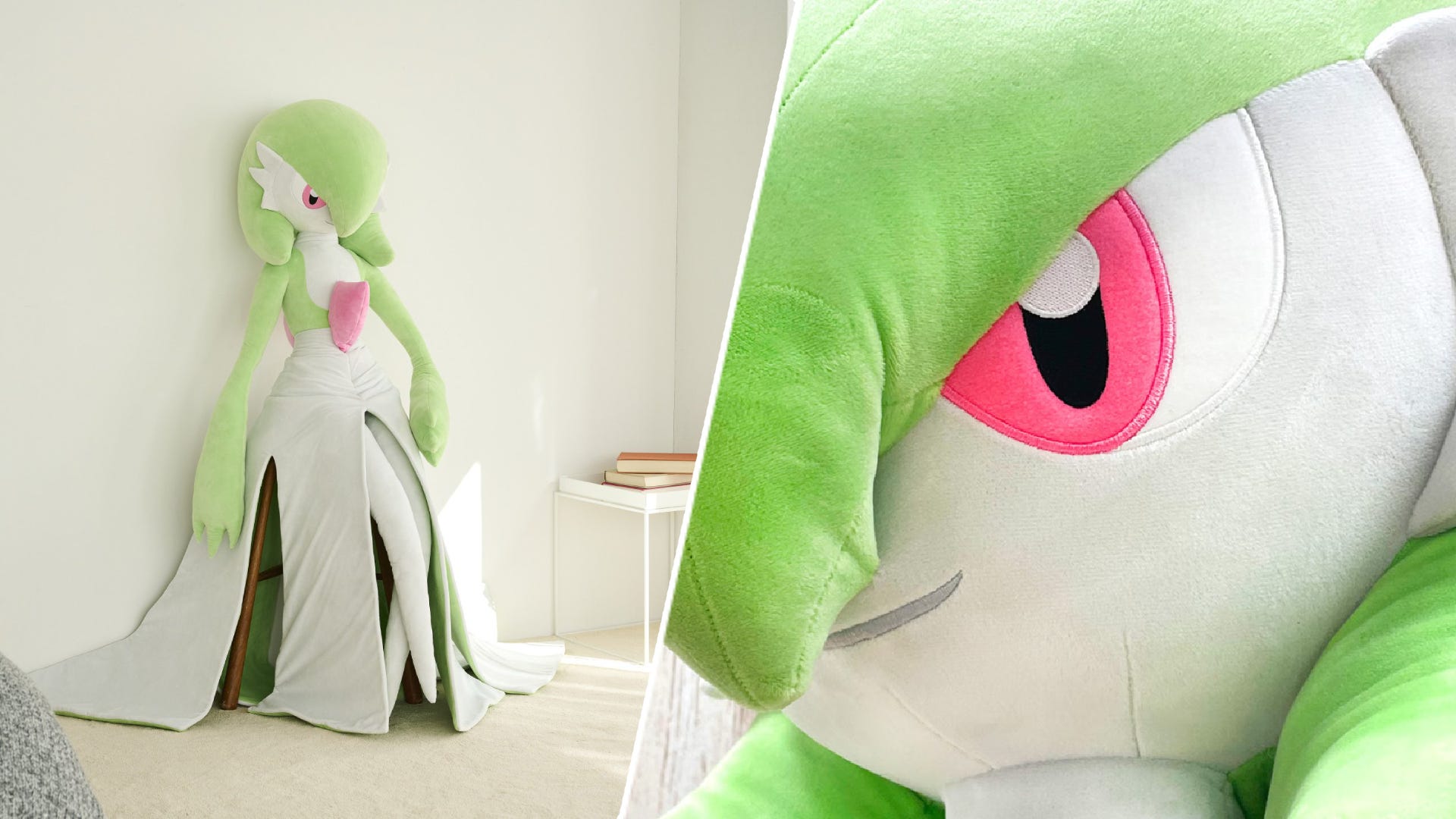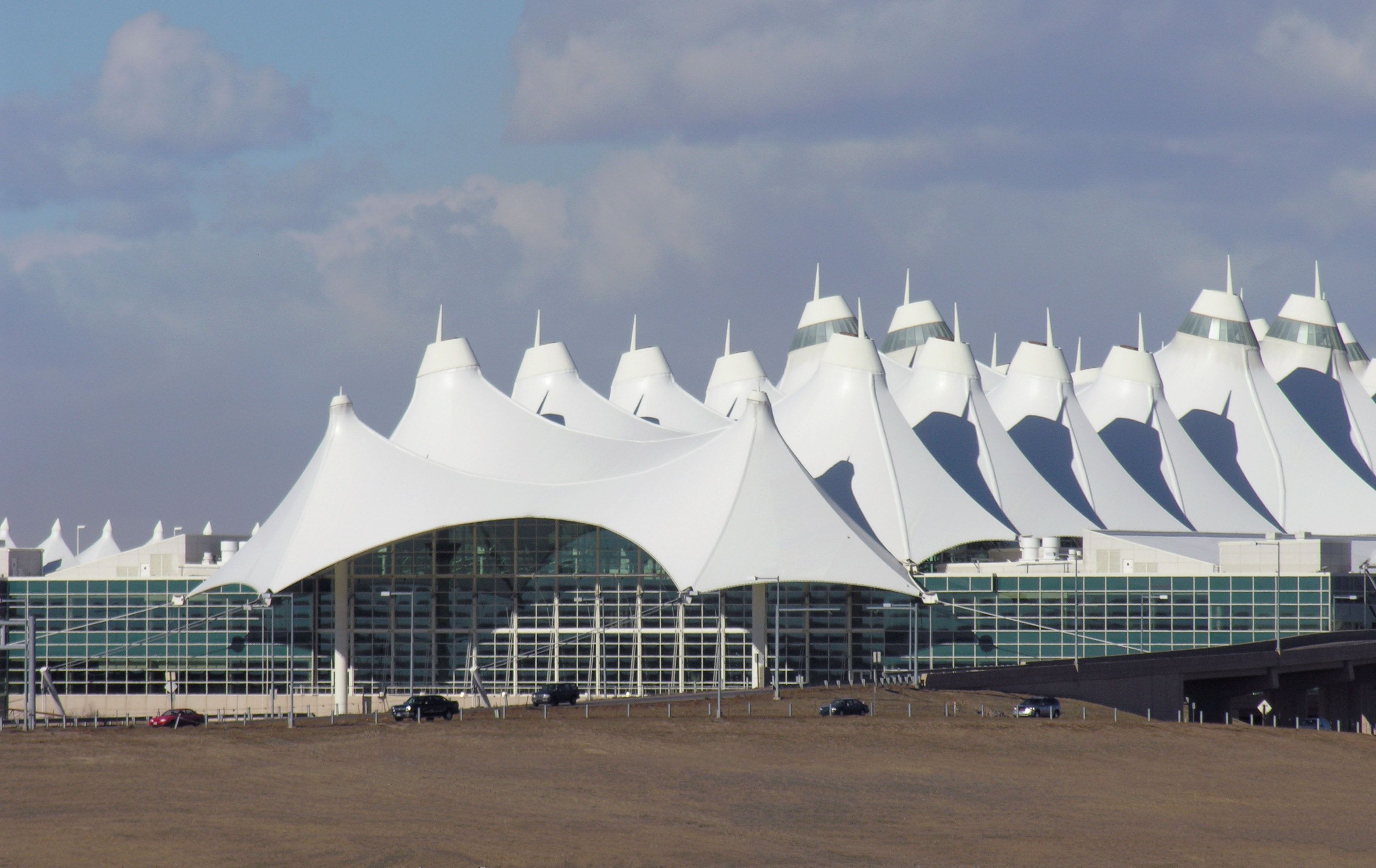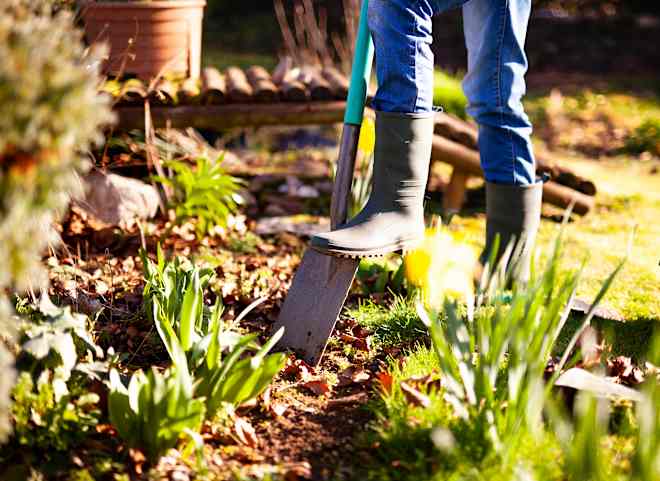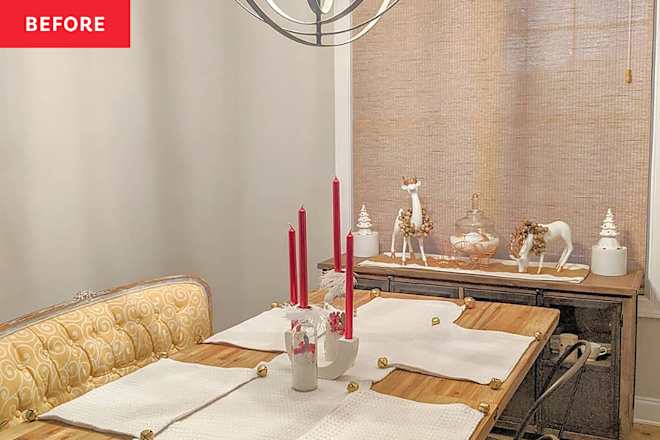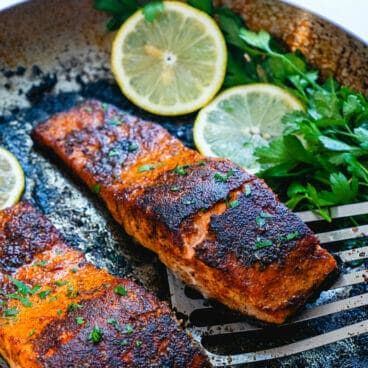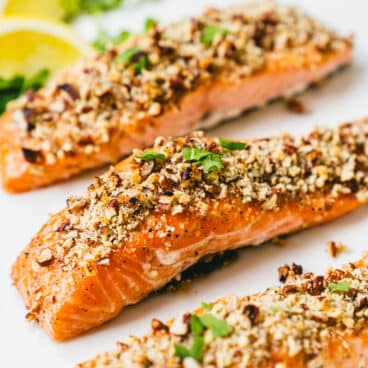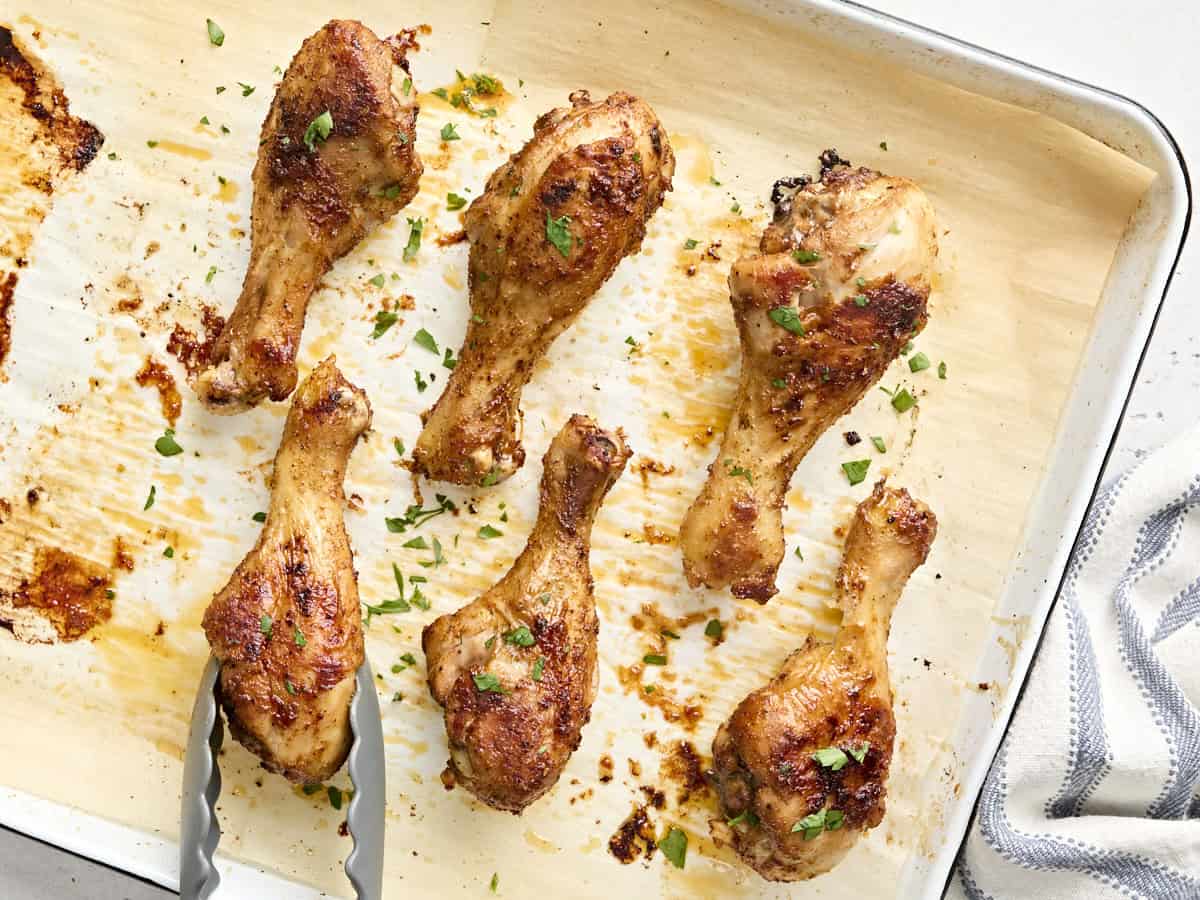Easy Broiled Salmon
Broiled salmon is the fastest and easiest way to cook this fish! It comes out flaky and full of savory…

Broiled salmon is the fastest and easiest way to cook this fish! It comes out flaky and full of savory flavor in only 10 minutes—a trick you’ll use again and again.

When it comes to easy dinner ideas, here’s one to add to your arsenal: broiled salmon! We love baked salmon, but broiling is faster, easier: and more delicious (we think). You don’t even need to preheat your oven!
While the salmon broils, you can make the rest of the meal: like a few sides or a salmon sauce. Alex and I exchanged glances of surprise when we first tasted this fish: it was so flaky and moist, we couldn’t stop eating it. Here are the tricks to making broiled salmon!
Featured reader comment
“Ohhhhh my goodness is this broiled salmon delicious! I’m going to do this brining and broiling method every time now. Nice crispy top, flaky insides. Aaaah it was perfect!” -Tanvee
Tips for broiling: temperature & position
If you only read one thing in this article, read this part! Here are a few things to know about broiling before you start:
- Broilers vary, so watch the cook time carefully! A thermometer is helpful. The exact timing for this broiled salmon depends on your specific broiler and the thickness of the fish. It will be different every time: so watch closely! A food thermometer is nice for judging whether it’s done.
- The salmon should be about 6 inches below the broiler heating element. Position the rack accordingly. Most broilers are about 3 to 5 inches from the heating element.
- Do you need to preheat a broiler? You don’t need to preheat, but turn it on about 5 minutes before you want to cook to give it time to heat up.
- What temperature is best for broiling? Many broilers don’t have temperature settings. If yours does, use a high broiler setting, which is around 500°F.
How to broil salmon: outline
There are just a few steps to broiled salmon; here’s what to know (or go right to the recipe):

Step 1: Preheat the broiler. Place the salmon in a salt water solution for 15 minutes; this also allows the salmon to come to room temperature. (If you don’t brine it, make sure to let the salmon come to room temperature so that it cooks evenly.)

Step 2: Place the room temperature salmon on a foil lined baking sheet. Drizzle with olive oil and season (see full recipe).

Step 3: Broil the salmon for 4 to 5 minutes for very thin salmon or 7 to 10 minutes for 1-inch thick salmon, until just tender and pink at the center and the internal temperature is 125 to 130°F in the center.
Important: The time to broil will depend on the thickness (watch closely). The timing on when the salmon is done depends on the thickness of the piece of salmon and your broiler, so use your best judgement: using a food thermometer is key!
Tip: Why to brine salmon before broiling
Brining the salmon is technically optional, but it makes the absolute best flavor and texture for broiled salmon! It also does two important things: it helps to bring the salmon to room temperature, which is important when broiling to ensure the salmon is cooked through. It also seasons the salmon and helps to prevent albumin, the white stuff that sometimes rises to the surface of salmon when it cooks.
The type of salmon to buy
There are lots of options when it comes to salmon at the grocery store! If you’re looking for a great piece of salmon, here are some pointers:
- Look for 1 to 1 1/2-inch thick salmon fillets. You might find this type labeled “center cut” at the store. You can also use thinner fillets like sockeye salmon, which take less time to cook.
- Buy fresh salmon, wild caught if possible. Salmon fresh from the fish counter usually has the best flavor. Frozen can work, but opt for highest-quality possible. Fish that is wild caught in your country is usually a sustainable choice. There are also quality options in well-regulated farms; see Seafood Watch Consumer Guide.
- Make sure to buy skin on. You’ll need skin-on salmon for this recipe.
Salmon sauce ideas
You don’t need a sauce for this broiled salmon, but it steps it up a notch! Here are a few of our favorite sauce ideas (in order of preference):
- Chimichurri: Herby and bright chimichurri is a natural fit.
- Dill sauce: This lemon dill sauce is creamy and tangy (or see lemon dill salmon).
- Pesto: Try pesto salmon or drizzle it with bright green basil sauce.
- Miso: This miso salmon that’s brushed with savory miso glaze.
- Cilantro lime sauce: This zingy cilantro lime ranch or cilantro dressing are perfect for fish.
Storage tips and leftover ideas
Store leftover broiled salmon for up to 3 days refrigerated. To reheat broiled salmon, place it on a baking sheet, loosely cover with foil, and reheat at 275°F for about 15 minutes. Avoid microwaving as it can dry out the fish, and reheating it in a skillet can overcook the fish.
For leftover salmon, we like repurposing it into new things like salmon cakes or salmon salad.
Sides to serve with broiled salmon
Broiled salmon is one of our true go-to’s for a quick and easy healthy dinner ideas: especially on weeknights! Here are a few ideas for sides to serve alongside:
- Try salad recipes like arugula salad, kale salad or apple salad
- Go for grains like seasoned quinoa or lemon rice
- Make sauteed veggies like sauteed peppers, sauteed vegetables, sauteed cabbage or peas with lemon
Dietary notes
This broiled salmon recipe is pescatarian, gluten-free and dairy-free (without the lemon butter sauce).
Easy Broiled Salmon
Broiled salmon is the fastest and easiest way to cook this fish! It comes out flaky and full of savory flavor in only 10 minutes—a trick you’ll use again and again.
- Prep Time: 15 minutes
- Cook Time: 10 minutes
- Total Time: 25 minutes
- Yield: 4
- Category: Main Dish
- Method: Broiled
- Cuisine: Seafood
- Diet: Gluten Free
Ingredients
- 1 pound wild caught salmon fillets, skin on
- Olive oil, for brushing
- ½ teaspoon kosher salt, plus more for brining
- Freshly ground black pepper
Instructions
- Brine the salmon*: In a shallow dish whisk together 4 cups room temperature water and 3 tablespoons kosher salt until it dissolves. Place the salmon in the water and wait for 15 minutes.
- Preheat the broiler to high. (Make sure the oven rack is positioned so the salmon is approximately 6 inches from the heating element.)
- Place a large sheet of aluminum foil on a baking sheet and brush it with olive oil. Pat each piece of salmon dry and place it on the foil skin side down. Brush salmon with a bit of olive oil and sprinkle with ½ teaspoon kosher salt (evenly divided among the fillets) and fresh ground pepper.
- Broil 4 to 5 minutes for very thin salmon or 7 to 10 minutes for 1-inch thick salmon, until it’s just tender and pink at the center (the internal temperature should be between 125 to 130°F in the center). Serve spritzed with lemon wedges or with sauces like Chimichurri, Dill Sauce, or Lemon Caper Sauce. Store leftover salmon refrigerated for up to 3 days.
Notes
*The brining step helps to bring the salmon to room temperature, which is important when broiling to ensure the salmon is cooked through. It also seasons the salmon and helps to prevent albumin, the white stuff that sometimes rises to the surface of salmon when it cooks.
Salmon recipes you may enjoy
Here are a few more easy salmon recipes we make on the regular:
- This blackened salmon or Cajun salmon are so simple.
- Try salmon burgers with remoulade, or salmon cakes with tartar sauce.
- Make seared salmon, pistachio crusted salmon, lemon garlic salmon, miso salmon, or maple glazed salmon that taste restaurant quality.













![From Gas Station to Google with Self-Taught Cloud Engineer Rishab Kumar [Podcast #158]](https://cdn.hashnode.com/res/hashnode/image/upload/v1738339892695/6b303b0a-c99c-4074-b4bd-104f98252c0c.png?#)




